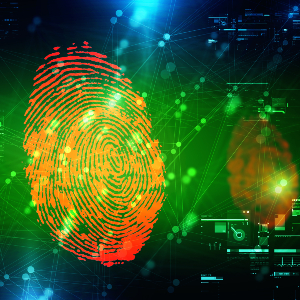
The development of the cloud has opened thousands of doors to increasing the speed and efficiency of data management and connectivity. Though some of us struggle to understand the concept and many of us can’t even begin to fathom how it all works, most of us grasp the critical importance of the cloud in how businesses are run today.
Certainly, life has changed since cloud technology has been a thing. Most of the ways it is used are completely taken for granted. Even some of the most basic things such as multiple people editing one document or sharing pictures between devices would be out of reach without the technology.
Although the cloud is of critical importance to many, both as individuals and businesses, the technology does have some downsides. For instance, with valuable and private data now being stored online, this information has become more vulnerable to theft. But a new field of forensics is rising to meet the demand to mine data for legal purposes while keeping it safe: cloud forensics.
What is Cloud Forensics?
The idea of cloud forensics is pretty new. It can’t have been around for more than a handful of years and it is a profession that is very much still evolving today. Cloud forensics is the application of digital forensics to gather data that can be used in a court of law.
Essentially, cloud forensics is a tool that can be used as a means of fighting cybercrime. It involves working with everyone associated with cloud information, such as providers, consumers, brokers, and other entities, to connect the dots and bring online crimes to heel. The difficulty with tracking crime through the cloud is that it can occur anywhere on Earth, which can make delivering justice especially difficult.
One of the most challenging aspects of cloud forensics is the preservation of evidence. On the cloud, it can be easy for anyone with access to tamper with evidence purposefully or inadvertently in an ongoing investigation. Many service providers have policies in place that hide logs from customers or don’t allow state/federal logs to be collected, which can make investigations of any sort a trying ordeal.
When Can Cloud Forensics be Used?
For many people, one of the biggest concerns associated with cloud forensics is the idea that data they thought was safe may not actually be. First, data can be tampered with or stolen by bad actors, and second, investigators may have unfettered access to data during an investigation. It is enough to leave anyone skeptical about online data on edge.
Fortunately, there are some federal guidelines and rules in place to help prevent unnecessary data access for investigative purposes. Some of the biggest rules are associated with the jurisdictional boundaries and lawful acquisition of untampered evidence. The boundaries of ownership of shared cloud data can be confusing, which can lead to a bit of quandary for forensics professionals.
The government has a substantial role to play in IT development and governance. For better or worse, this role is very much still in its initial stages when it comes to some of the newer technologies, such as the cloud and cloud forensics. This can mean that there is plenty of room for creative and helpful developments but can also mean that there is a limited legal framework in place to protect users or to regulate data usage.
Avoiding Issues
There are about a million ways that the cloud can be used to benefit businesses going forward. For example, the cloud is housing even newer and more impressive technologies, such as artificial intelligence software, that are set to completely change the way business is done in the world. It is also breaking down barriers and making it possible for people across the globe to share, collaborate, and improve all sorts of documents and information.
Perhaps the biggest risk of having to be involved with cloud forensics for most individuals is if their company is under some sort of investigation. Many companies have already developed clear policies on how employees will be handled or disciplined during inquiries into their conduct, but now, many need to work on updating these policies to take into account data shared in the cloud and how employees can cross red lines by tampering with, capitalizing on, or sharing information they are not supposed to.
There are plenty of ways to help protect data and personal information in the cloud, which can also help protect privacy and avoid the need for any cloud forensics work. The biggest factor is understanding the risks associated with using the cloud, both from threats and investigators. The next is to customize your space by setting your own encryption keys, limiting how data can be shared, and removing devices that are unmanaged or no longer in use.
The cloud has brought about a lot of monumental, positive changes in our businesses and individual lives. However, there are negative sides of the cloud that are investigated using cloud forensics. There are limitations to how the government can access data during investigations, but the governance is still in its infancy and is likely to develop further in the coming years. At this point, taking steps to protect yourself and your business is the best means of protecting privacy from any entity.
